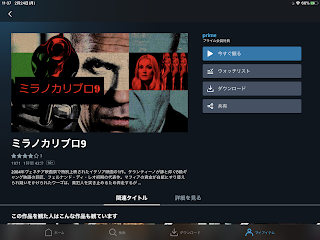moreCT!2020(2020年10月9日(金)18時よりweb開催)にて発表を予定しています。
2019年末に中国武漢で初めて認められた新型コロナウイルス感染(COVID19)は、2020年の初めから世界規模のパンデミックな蔓延を呈している。
2020年1月、中国からこの感染症の医学情報が医学雑誌やインターネットに報告され、世界規模で情報共有なされた。その後、感染拡大とともに各国から報告がなされ、多くの医学情報が臨床現場からアクセス可能になっている。特にX線CT画像所見が早期に共有されたことにより、PCR検査が普及するまでの間の患者トリアージに大いに役立った。
COVID19のCT画像に関しては、AIを用いた解析が迅速に行われ、2020年3月に中国で遠隔診断可能な画像解析AIが構築され、韓国からスタンドアロンの画像解析AIが開発され、それぞれ利用可能となった。膨大なビッグデータを利用できる環境において、AIは迅速に目的の解析やフレームワークの作製を行うことができる。本検討に用いたMEDIP COVID19は胸部CTを使用してCOVID-19を検出・評価するための完全自動フレームワークとして開発された。パンデミックの蔓延速度より早く画像診断体制を構築することを目指したAIのCOVID19肺炎検出の使用経験を紹介したい。
 Automatic CT Quantification of Coronavirus Disease 2019 pneumonia:
An international collaborative development, validation, and clinical
implication
Automatic CT Quantification of Coronavirus Disease 2019 pneumonia:
An international collaborative development, validation, and clinical
implication
Seung-Jin Yoo, Xiaolong Qi, Shohei Inui, Sang Joon Park, Hyungjin
Kim, Yeon Joo Jeong, Kyung Hee Lee, Young Kyung Lee, Bae Young Lee, Jin
Yong Kim, Kwang Nam Jin, Jae-Kwang Lim, Yun-Hyeon Kim, Ki Beom Kim,
Zicheng Jiang, Chuxiao Shao, Junqiang Lei, Shengqiang Zou, Hongqiu Pan,
Ye Gu, Guo Zhang, Jin Mo Goo, Soon Ho Yoon Preprint, Jul 24 2020
We retrospectively collected anonymized 176 chest CT scans of 131
reverse transcription-polymerase chain reaction (RT-PCR)-proven COVID-19
patients (mean age, 47.2±18.1 years; male to female ratio, 59%:41%)
that were obtained at 13 Korean and Chinese institutions from 23 January
to 15 March 2020.
Preparation of training CT data
The CT images were uploaded to a commercially available software
program for semi-automatic segmentation (MEDIP PRO v2.0.0.0, MEDICALIP
Co. Ltd., Seoul, Korea). The lung parenchyma was segmented by a
previously developed deep neural network (DeepCatch v1.0.0.0, MEDICALIP
Co. Ltd., Seoul, Korea; submitted), which automatically extracts lung
parenchyma with an accuracy higher than 99% in CT images containing
extensive lung disease. All parenchymal abnormalities of COVID-19 were
initially segmented by two technicians. After reviewing the tentative
lung and lesion masks, one of the two thoracic radiologists determined the presence of COVID-19 lesions and adjusted
the masks in every axial CT image slice. The radiologists excluded parenchymal lesions other than COVID-19, such
as peripheral reticulations and honeycombing, tuberculous sequelae,
calcified nodules, dependent densities, pleural effusions, and areas of
motion artifacts.
Development of the deep neural network
The 176 CT scans were randomly assigned into one of the three
following data sets: 146 cases for the training set, 10 cases for the
tuning set, and 20 cases for the internal validation set. A majority of
the CT scans consisted of 1-mm-section CT images with standard- to
low-dose CT protocols. Data were preprocessed by changing the Hounsfield
unit (HU) values of the area outside the lung to -3024, and axial
slices without the lung were not included in the training set. In total,
24,915 slices of axial data with areas of pneumonia and 30,711 slices
of axial data without areas of pneumonia were available in the dataset.
The training data were
normalized by using the lung window setting.
Our 2D U-Net received an input with a size of 512×512×1 and consisted
of initial convolutions, four encoders, four decoders, and a final
convolution. Except for the final convolution, which was a 1×1
convolution, every convolutional layer consisted of a 3×3 convolution
followed by batch normalization and the rectified linear unit
(ReLu) activation function. For decoders, upsampling with bilinear
interpolation was used, followed by concatenation to conserve
information before down-sampling.
The Kaiming He initialization method was used for weight
initialization. A sigmoid function was used in the final layer, and the
model was trained using the stochastic gradient descent algorithm and
the binary cross entropy loss function. After the training was
completed, the tuning dataset was used to choose the best weight, which
was saved after each epoch.
The 2D U-Net was distributed as free standalone software (MEDIP
COVID19) on 18 March 2020 and updated with the current version of
v1.2.0.0 on 27 April. The software conducted a quantification of
pneumonia in 1 minute with the recommended speculations. Based on the area of COVID-19 pneumonia segmented by the network,
the software measured the volume of the pneumonia and lung parenchyma
and automatically calculated the extent (%) and weight (g) of pneumonia.







